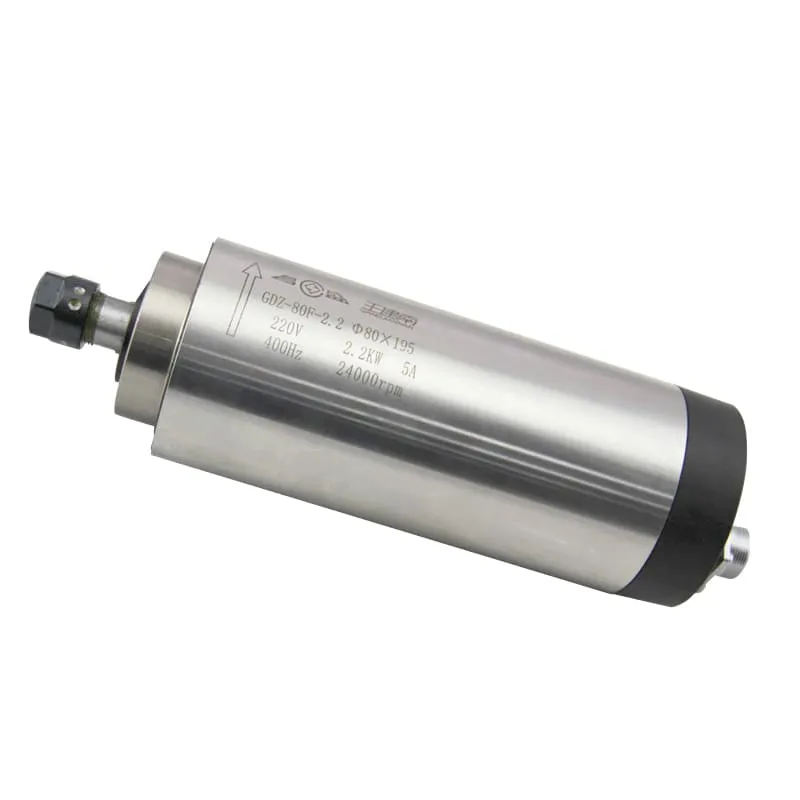How CNC Router Works
CNC (Computer Numerical Control) routers have revolutionized the woodworking and manufacturing industries by providing precision, efficiency, and versatility in cutting and shaping various materials. This comprehensive guide will explore the inner workings of CNC routers, their components, and the processes they employ to create a wide range of products.
Understanding CNC Routers
A CNC router is a computer-controlled cutting machine used for cutting various materials, such as wood, plastics, metals, and composites. It uses a rotating cutting tool and a moving platform to create precise cuts and shapes based on digital designs.

A typical CNC router setup
Key Components of a CNC Router
To understand how a CNC router works, it’s essential to familiarize yourself with its main components:
- Frame and Gantry: The structural backbone of the machine
- Spindle: Holds and rotates the cutting tool
- Drive System: Motors and mechanisms that move the tool or work surface
- Control System: Computer and software that manage the machine’s operations
- Work Surface: The area where the material is placed for cutting
- Dust Collection System: Removes debris during cutting
The CNC Routing Process
The CNC routing process involves several steps:
1. Design Creation
- A digital design is created using Computer-Aided Design (CAD) software
- The design specifies the dimensions and features of the final product
2. CAM Programming
- Computer-Aided Manufacturing (CAM) software converts the CAD design into machine instructions
- These instructions, typically in G-code, guide the router’s movements
3. Machine Setup
- The workpiece is secured to the work surface
- The appropriate cutting tool is installed in the spindle
- The machine is calibrated and zeroed to the workpiece
4. Cutting Operation
- The control system executes the G-code instructions
- The spindle rotates the cutting tool at high speeds
- The drive system moves the tool or work surface in three dimensions (X, Y, and Z axes)
- The tool cuts or carves the material according to the programmed path
5. Finishing and Inspection
- Once cutting is complete, the part is removed and inspected
- Additional finishing may be done manually or with other machines
How CNC Routers Achieve Precision
CNC routers are known for their high precision. This is achieved through several mechanisms:
1. Computer Control
- Precise digital instructions eliminate human error
- Consistent and repeatable movements
2. Stepper or Servo Motors
- Provide accurate positioning and movement
- Can make very small, precise adjustments
3. Rigid Construction
- Sturdy frames and gantries minimize vibration and flexing
- Ensures accuracy even under cutting forces
4. Tool Calibration
- Automatic or manual tool length measurement
- Compensates for tool wear and changes
Types of CNC Router Configurations
CNC routers come in various configurations to suit different needs:
1. Moving Gantry
- The work surface remains stationary while the gantry moves
- Suitable for large, heavy workpieces
2. Moving Table
- The gantry remains fixed while the table moves
- Often used for smaller, lighter materials
3. Nested-Based
- Uses a vacuum system to hold multiple parts
- Ideal for high-volume production
Cutting Tools and Spindles
The choice of cutting tools and spindles greatly affects the router’s performance:
1. Router Bits
- Various shapes and sizes for different cutting operations
- Materials include carbide, high-speed steel, and diamond-tipped
2. Spindles
- Determine the speed and power of the cutting tool
- Options range from basic routers to high-power spindles
- Example: 2.2KW ER20 Air-Cooled Spindle for general-purpose use
3. Automatic Tool Changers
- Allow for multiple cutting operations without manual intervention
- Increase efficiency in complex projects
Materials Commonly Used in CNC Routing
CNC routers can work with a wide range of materials:
- Wood: Softwoods, hardwoods, plywood, MDF
- Plastics: Acrylic, PVC, polycarbonate
- Soft Metals: Aluminum, brass, copper
- Composites: Carbon fiber, fiberglass
- Foams: Insulation foam, polystyrene
Each material requires specific cutting speeds, feed rates, and tool selection for optimal results.
Advanced Features of Modern CNC Routers
Contemporary CNC routers offer advanced capabilities:
1. 4th and 5th Axis Routing
- Allows for complex 3D shapes and contours
- Useful for sculptural and intricate designs
2. Vacuum Hold-Down Systems
- Securely holds the workpiece without clamps
- Enables full surface machining
3. Automatic Tool Measurement
- Measures tool length and diameter automatically
- Ensures accuracy across tool changes
4. Integrated CAD/CAM Software
- Streamlines the design-to-production process
- Offers simulation and optimization features
CNC Router Maintenance
Proper maintenance is crucial for the optimal operation of CNC routers:
- Regular Cleaning: Remove dust and debris
- Lubrication: Keep moving parts properly lubricated
- Calibration: Periodically check and adjust machine alignment
- Tool Management: Monitor tool wear and replace as needed
- Software Updates: Keep control software up to date
Safety Considerations in CNC Routing
Safety is paramount in CNC routing operations:
- Operator Training: Ensure all operators are properly trained
- Machine Guarding: Use appropriate guards and enclosures
- Dust Collection: Implement effective dust management systems
- Personal Protective Equipment (PPE): Use appropriate safety gear
- Emergency Stops: Install and regularly test emergency stop systems
The Future of CNC Routing
CNC routing technology continues to evolve:
- Integration with 3D Printing: Hybrid machines combining routing and additive manufacturing
- Artificial Intelligence: Optimized cutting strategies and predictive maintenance
- Augmented Reality: Enhanced interfaces for setup and operation
- Eco-Friendly Practices: More energy-efficient machines and sustainable materials
Environmental Considerations
Modern CNC routing is addressing environmental concerns:
- Energy Efficiency: More efficient motors and systems
- Waste Reduction: Optimized toolpaths and nesting for material efficiency
- Dust Management: Advanced collection and filtration systems
- Sustainable Materials: Exploring eco-friendly alternatives
FAQ
1. How does a CNC router differ from a traditional router?
A CNC router is computer-controlled, allowing for precise, repeatable cuts based on digital designs. Traditional routers are handheld or mounted on simple jigs and rely on manual guidance.
2. Can a CNC router cut metal?
While primarily designed for wood and plastics, many CNC routers can cut soft metals like aluminum. For harder metals, specialized CNC mills are typically used.
3. How accurate are CNC routers?
CNC routers can achieve high accuracy, often within tolerances of ±0.001 inches or better, depending on the specific machine and setup.
4. What’s the largest size material a CNC router can handle?
The size capacity varies by machine. Small desktop CNC routers might handle materials up to 2×2 feet, while large industrial machines can work with sheets 5×10 feet or larger.
5. How long does it take to create a part with a CNC router?
The time varies greatly depending on the complexity of the part, the material being used, and the specific routing operations required. It can range from a few minutes to several hours.
6. Can a CNC router create 3D shapes?
Yes, CNC routers can create 3D shapes through a process called 3D carving or 3D machining. This involves removing material in layers to create three-dimensional objects.
Conclusion
CNC routers represent a remarkable fusion of computer technology and traditional woodworking techniques. Their ability to consistently produce complex parts with high precision has made them indispensable in modern manufacturing, woodworking, and prototyping industries.
Understanding how CNC routers work provides insight into the capabilities and limitations of this technology. From the initial design phase through to the final cutting operations, CNC routing processes offer a level of control and repeatability that has transformed production across various sectors.
As CNC routing technology continues to evolve, we can expect to see even greater levels of automation, precision, and integration with other manufacturing technologies. The ongoing development of more sophisticated control systems, advanced materials, and innovative tooling will further expand the capabilities of CNC routers.
For anyone involved in woodworking, manufacturing, or product design, a solid grasp of CNC routing technology is invaluable. Whether you’re operating these machines, designing parts for CNC production, or managing manufacturing processes, understanding the principles behind CNC router operation will enable you to leverage this powerful technology effectively.
The world of CNC routing is dynamic and ever-changing, offering continuous opportunities for learning and innovation. As we look to the future, CNC routers will undoubtedly play a crucial role in shaping the manufacturing landscape, driving advancements in fields ranging from furniture production and sign making to aerospace prototyping and artistic sculpture.
By embracing the capabilities of CNC routing technology and staying abreast of its developments, manufacturers, woodworkers, and designers can continue to push the boundaries of what’s possible in production, creating ever more sophisticated and precise parts to meet the evolving needs of industry and society.

